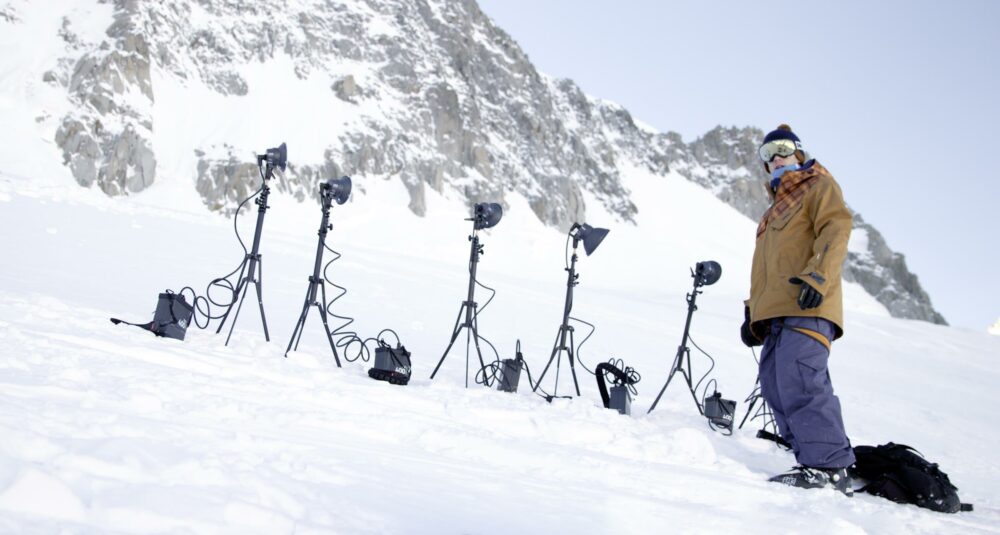The Crevasse
Imagine positioning yourself at the bottom of an icy crevasse with a studio flash system, waiting for skiers to leap above you ! That was Tristan Shu’s crazy idea. The ELB 400 flash system was part of the winning formula for this exceptional photo shoot.
The French extreme sports photographer, Tristan Shu, tells us about his experiences with the new elinchrom portable battery flash system, the ELB 400. Shooting in freezing, dangerous, and snowy conditions, with a seemingly endless series of challenges to overcome, the results speak for themselves: bold and epic.
Tristan, tell us about how this crazy idea came to you.
I actually shot something similar a few years ago. I had gone down into a crevasse and skiers were jumping above me and making shapes.
At the time I had shot everything with natural lighting, and I said to myself that it would be cool to redo this shot with flash; the results with the vivid ice would be awesome. But it still took me years before I could pull everything together in the right conditions.
You could say that the images have a slightly surreal look.
What are the conditions you need to achieve a result like that?
The star of the shot is the crevasse itself. It had to be wide, but not too wide or the skiers wouldn’t make it across. It also had to be deep enough to be impressive, but not so deep that the skiers would look too small in the photo.
Above all, if the crevasse was too deep it could be a nightmare to manage the flashes and to achieve the lighting effects I wanted. It also had to look good, and be safe enough so that I could go down to the bottom and move around freely.
Finally, it had to allow the skiers to get up enough momentum to make the jump, and to let them land properly afterwards.
“The star of the shot is the crevasse itself! “
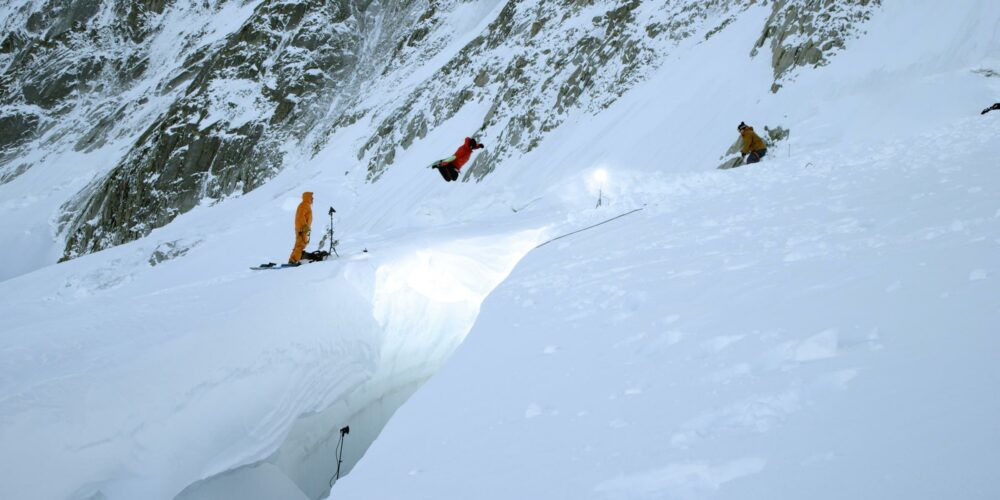
Finding a crevasse that met all these criteria turned out to be hugely complicated. We found a bunch that looked good at first but ultimately let us down. Each time someone in the group thought they’d found something, it didn’t work out for whatever reason. To put the right team together we had to audition tens of different skiers and guides who were all keen to work on this project.
On top of that, we had to cope with a record winter in terms of snow-free days in the Alps, so it was impossible to ski and we had to wait for the right moment to get started.
Eventually we did find a perfect crevasse and, despite everything, we had very firm snow cover that we had to break down further to enable the skiers to make multiple jumps without putting themselves in danger.
Anyway, what a relief it was when we finally found the right crevasse!
“We needed hardware that was strong, reliable portable & powerful! The ELB 400s are just perfect in this setting!”
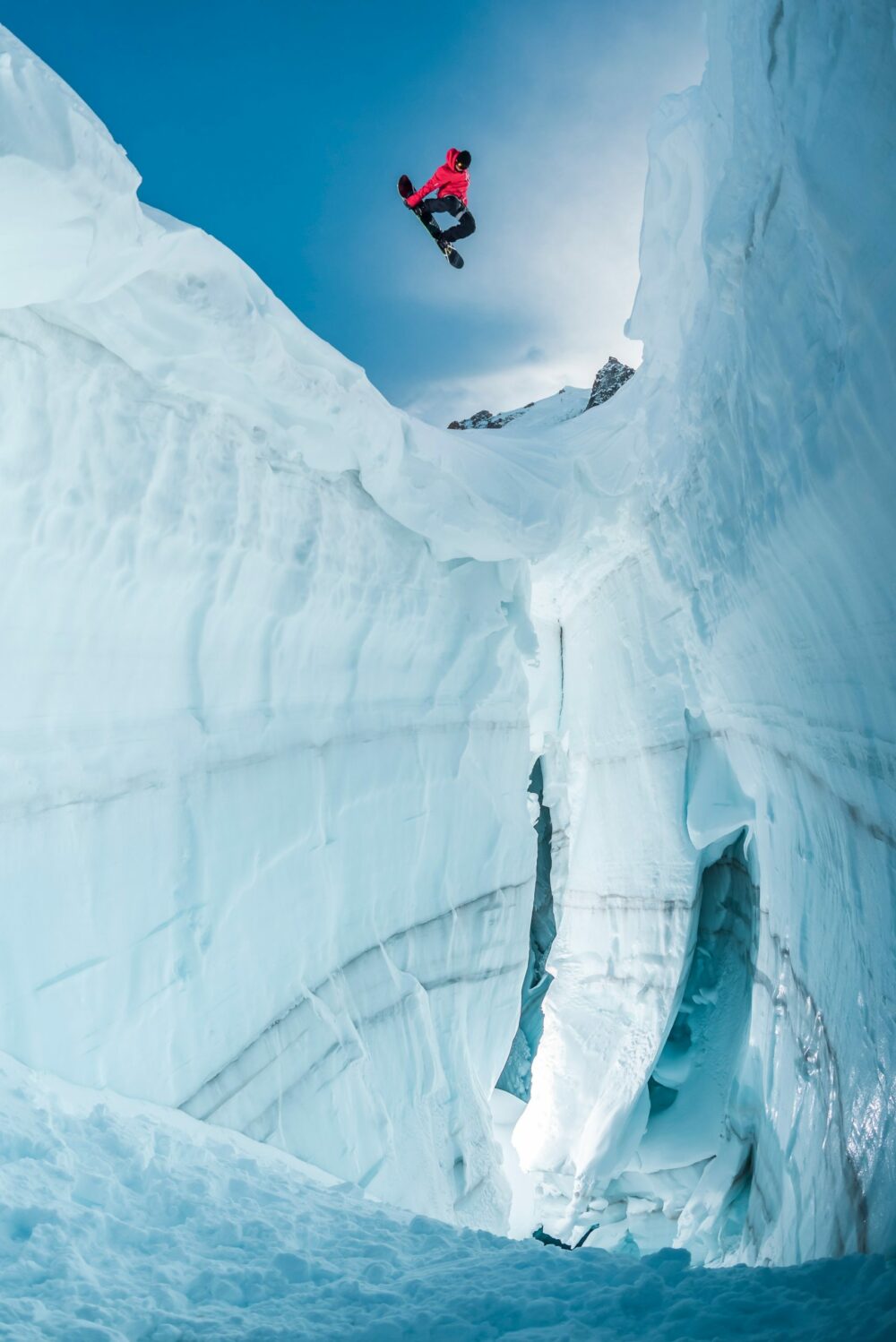
Can you give us a technical description of how you managed to complete the shoot?
I decided to use six flashes for this shoot: one above each side of the crevasse to light the skiers and the top of the crevasse, three in the crevasse hidden behind blocks of ice, and one behind me to add a bit of fill flash and to brighten the foreground a little.
It goes without saying that I took advantage of HyperSync technology to enable me to freeze the action perfectly, and to be as flexible as possible so I could experiment with the ambient light levels. It wasn’t straightforward because I couldn’t make too many attempts to set up my lighting.
I had to use my imagination, work things out in my head, and get the lighting right from the start. The final result was very close to what I’d imagined and I’m very pleased!
Why the Elinchrom ELB 400 portable flashes were the right gear to use in this context?
The mountains are hostile and dangerous at high altitudes: after all we were in a glacial environment with hundreds of meters of ice – and drops – below us. The slightest movement needs ropes and the expertise of the guides. Otherwise it’s not safe. We needed hardware that was strong, reliable, portable, and powerful.
The ELB 400s are just perfect in this setting. The Elinchrom hardware worked perfectly in highly sensitive and complicated conditions.
“It makes an incredible difference if you can have complete faith in your gear. It takes a load off of your mind and lets you focus on your ideas.”
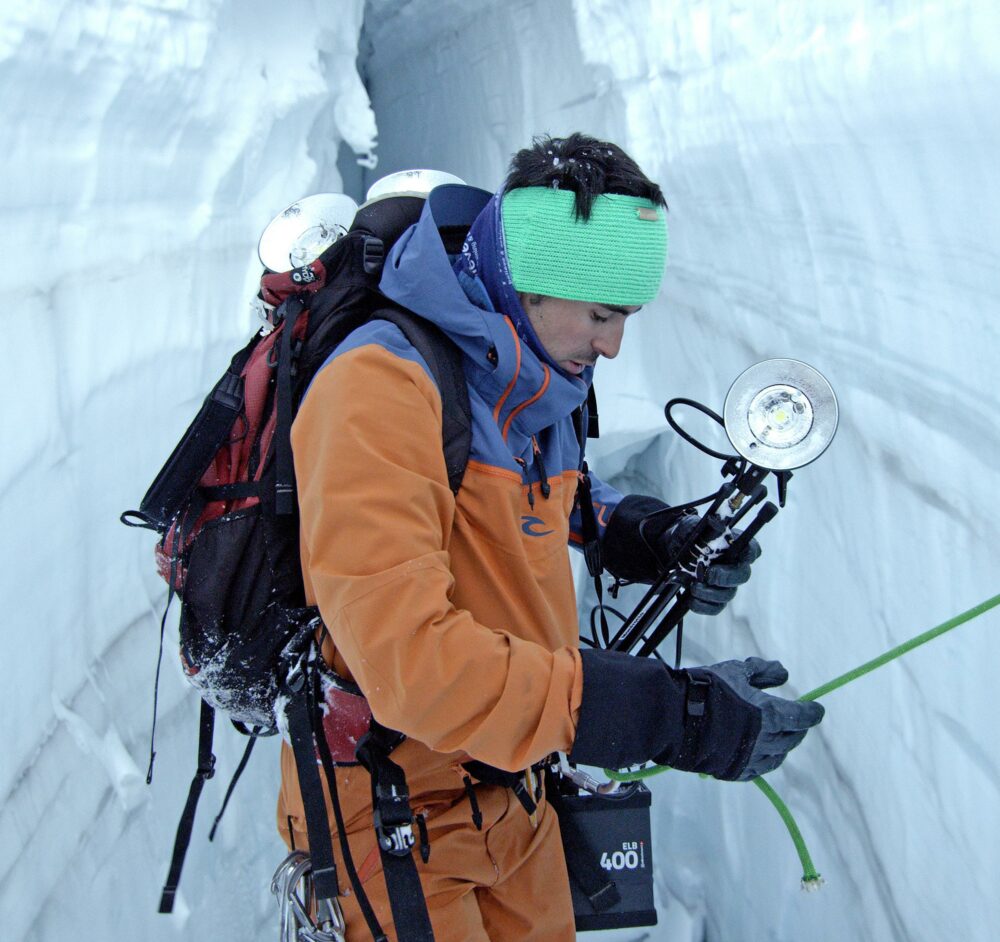
Could you tell us more about the advantages of the ELB 400?
Undeniably, their light weight and portability are huge advantages for this type of project. I could probably have completed the shoot with larger flashes like the Ranger RX, but it would have been another logistical challenge on top of everything else.
We would have needed a lot more time, and a lot more people, just to achieve the same result.
You need to bear in mind that we had six ELB 400s and the same number of tripods and remotes with us.
We could carry all that in three backpacks, which is just incredible. In terms of usability, the fact that these flashes are so intuitive, fun and easy to use, makes them so capable.
All the information is on the screen and is easy to see; even someone who’s not used to operating a flash can manage it in a few seconds. That’s how I managed to get one of the guides to move a flash for me and change the settings while I was at the bottom of the crevasse and couldn’t see anything.
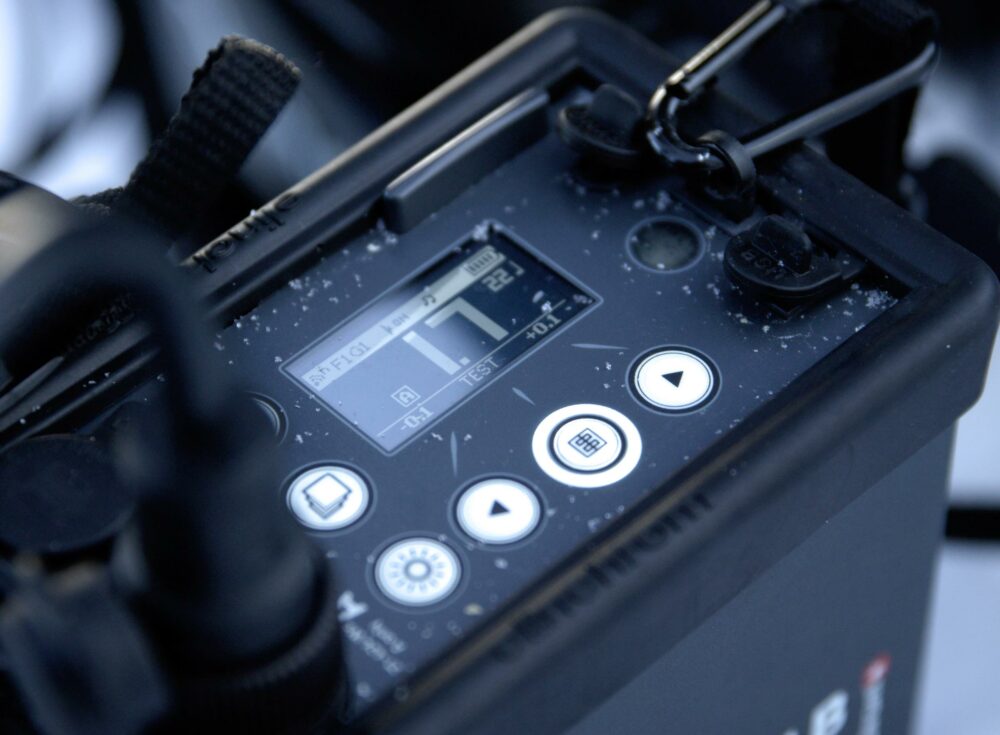
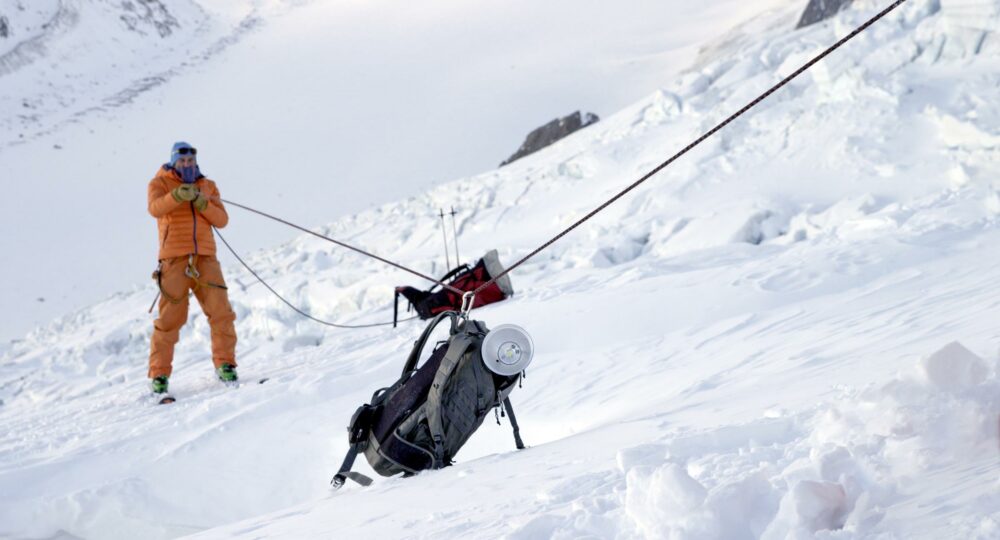
“Their light weight and portability are huge advantages for this type of project.”
I didn’t realize that the ergonomic changes between the previous generation of Quadras and the ELB could make such a difference for everyday use. It really is completely different. The build quality is another very important point. It was cold and it was a very hostile environment, with the cold and the ice, snow, wind and humidity. The ELBs were in the snow throughout the shoot and there wasn’t a single trigger problem. For me, that was clearly the most important test and they passed with flying colors! After the shoot, the ELBs even stayed in the backpacks that were full of snow for more than 24 hours and again, there was nothing to report: everything worked perfectly. It makes an incredible difference if you can have complete faith in your equipment. It takes a load off of your mind and lets you focus on your ideas. Above all, it lets you deal with the problems you have to solve. It’s extremely reliable equipment: it’s Swiss, and you know it’s going to work.
